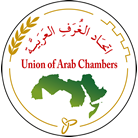Libya: Potentials in need of investment
Resources and investment capacities
Libya extends over about 1.8 million square kilometers, which makes it the 16th largest country in the world and the third largest country in Africa. At 1955 kilometers, Libya’s coastline is the longest of any country bordering the Mediterranean.
Libya has the largest oil reserves in Africa, with proven oil reserves of about 48.4 billion barrels, and reserves of natural gas 52 trillion cubic feet, and is characterized by an abundant production of light sweet crude.
The main industries include oil and gas extraction and refining, as well as petrochemicals, aluminum, iron and steel, cement and building materials, in addition to some food, textile and handicrafts industries. The USD 30 billion worth Great Man-Made River is the main source of fresh water.
Libya has untapped tourist potential, especially as it has a collection of the largest Roman archaeological sites along its coast, as well as Greek and Turkish monuments, a wide coastline suitable for tourism investment, in addition to one of the largest deserts in the world and several areas that can be invested as natural reserves, such as the Green Mountain, which exceeds the size of Lebanon.
Implications of disturbances
The Libyan economy has been affected by the ongoing conflict and continues to suffer from recession. The World Bank estimates that GDP is only half its pre-revolution level. Budget revenues and export earnings were also at their lowest levels due to lower oil production and prices. The real incomes of the population have been eroded under the pressure of high inflation, not to mention the challenges related to instability.
Libya's ranking in the World Bank indicators for ease of doing business for 2017 among 190 countries

Source: World Bank Doing Business 2017
The challenges of reconstruction
It is hoped that the Government of National Accord (GNA) will succeed in instilling stability to move forward with reconstruction projects. Key challenges include regaining control over the country's assets, restoring oil production, rebuilding infrastructure, and encouraging investment to diversify economic activity in order to create jobs in view of achieving inclusive growth for all. Libya needs an estimated $100 billion over the next five years to build infrastructure that meets the needs of socio-economic development and attracts domestic and foreign investment.
It is important to strengthen the legislative, regulatory and institutional system to ensure that spending goes in the right direction in line with the aspirations of the Libyan people for sustainable and dignified development, and to build the state on modern foundations with a free and developed economic system based on a free market economy.
Investment opportunities
There are many investment opportunities in the areas of modernization of road networks and other infrastructure and facilities, as well as the construction of tourist resorts on the picturesque beaches and areas of the Jebel Akhar (the Green Mountain) and Zuwarah, among other regions. A railway network should be constructed to connect cities and infrastructure to each other, in addition to networking with neighboring countries so as to enhance trade efficiency and stimulate investment, especially as the vast majority of Libya consists mainly of flat land. The construction of such a network would therefore be considerably less costly compared to other countries.
